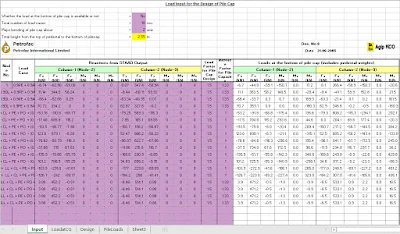Design of Cantilever Slab Spreadsheet
Cantilever slabs are a typical one way slabs. They are projections from wall face of lintel beams or floor slabs. Even while designing they are considered as one-slabs with cantilever fixed or continuous at supports. The trial depth is selected based on span/depth ratio of 7, as in IS:456. The reinforcement provided at the tension face should be checked for anchorage length near supports. The thickness of such slabs is varied from max. at the fixed end to the min. of 100 to 150 mm at the free end. Distribution steel should be provided at the transverse direction. Proper selection of depth and detailing of reinforcements will safeguard against excessive deflections and cracking of the cantilever slabs. Also, cantilever structural elements should be checked for safety against overturning.


























